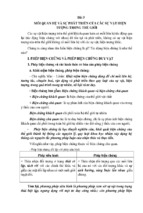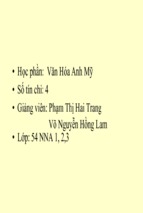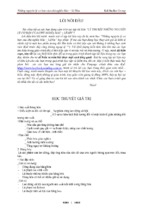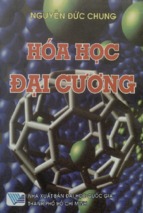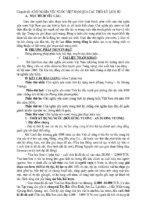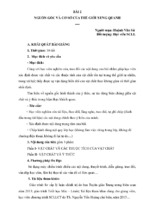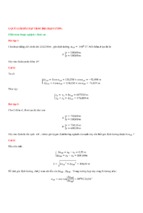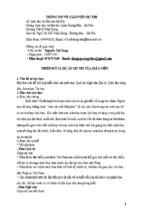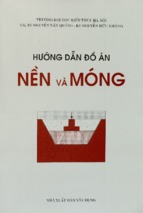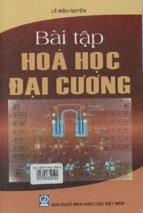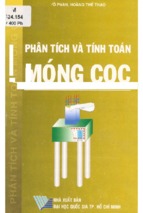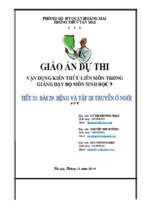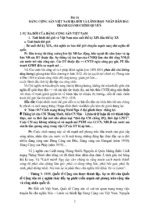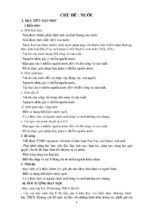Downloaded from ascelibrary.org by RMIT UNIVERSITY LIBRARY on 01/03/19. Copyright ASCE. For personal use only; all rights reserved.
Congress on Technical
Advancement 2017
Construction and Forensic Engineering
Proceedings of the Congress on
Technical Advancement 2017
Duluth, Minnesota
September 10–13, 2017
Edited by Jon E. Zufelt, Ph.D., P.E., D.WRE
Downloaded from ascelibrary.org by RMIT UNIVERSITY LIBRARY on 01/03/19. Copyright ASCE. For personal use only; all rights reserved.
CONGRESS ON TECHNICAL
ADVANCEMENT 2017
CONSTRUCTION AND FORENSIC ENGINEERING
PAPERS FROM SESSIONS OF THE FIRST CONGRESS ON TECHNICAL
ADVANCEMENT
September 10–13, 2017
Duluth, Minnesota
SPONSORED BY
Committee on Technical Advancement
Aerospace Engineering Division
Cold Regions Engineering Division
Committee on Adaptation to a Changing Climate
Energy Division
Forensic Engineering Division
Infrastructure Resilience Division
Construction Institute
Duluth Section of ASCE
Utility Engineering and Surveying Institute of the
American Society of Civil Engineers
EDITED BY
Jon E. Zufelt, Ph.D., P.E., D.WRE
Downloaded from ascelibrary.org by RMIT UNIVERSITY LIBRARY on 01/03/19. Copyright ASCE. For personal use only; all rights reserved.
Published by American Society of Civil Engineers
1801 Alexander Bell Drive
Reston, Virginia, 20191-4382
www.asce.org/publications | ascelibrary.org
Any statements expressed in these materials are those of the individual authors and do not
necessarily represent the views of ASCE, which takes no responsibility for any statement
made herein. No reference made in this publication to any specific method, product, process,
or service constitutes or implies an endorsement, recommendation, or warranty thereof by
ASCE. The materials are for general information only and do not represent a standard of
ASCE, nor are they intended as a reference in purchase specifications, contracts, regulations,
statutes, or any other legal document. ASCE makes no representation or warranty of any
kind, whether express or implied, concerning the accuracy, completeness, suitability, or
utility of any information, apparatus, product, or process discussed in this publication, and
assumes no liability therefor. The information contained in these materials should not be used
without first securing competent advice with respect to its suitability for any general or
specific application. Anyone utilizing such information assumes all liability arising from such
use, including but not limited to infringement of any patent or patents.
ASCE and American Society of Civil Engineers—Registered in U.S. Patent and Trademark
Office.
Photocopies and permissions. Permission to photocopy or reproduce material from ASCE
publications can be requested by sending an e-mail to
[email protected] or by locating a
title in ASCE's Civil Engineering Database (http://cedb.asce.org) or ASCE Library
(http://ascelibrary.org) and using the “Permissions” link.
Errata: Errata, if any, can be found at https://doi.org/10.1061/9780784481035
Copyright © 2017 by the American Society of Civil Engineers.
All Rights Reserved.
ISBN 978-0-7844-8103-5 (PDF)
Manufactured in the United States of America.
Congress on Technical Advancement 2017
iii
Preface
Downloaded from ascelibrary.org by RMIT UNIVERSITY LIBRARY on 01/03/19. Copyright ASCE. For personal use only; all rights reserved.
The Congress on Technical Advancement was established to bring together several of the
Divisions under the ASCE Board-level Committee on Technical Advancement (CTA) at a
single venue. While some of the CTA Divisions hold regular small conferences, others do
not have an established forum to present technical information to their constituents or the
engineering community. One of the goals of the Congress is to provide greater
opportunities for interaction and synergy among the activities of the Divisions and ASCE’s
Institutes. This 1st Congress on Technical Advancement was held at the Duluth
Entertainment and Convention Center in Duluth, Minnesota on September 10-13, 2017.
This 1st Congress included the participation of and presentations by the Aerospace
Engineering Division, Cold Regions Engineering Division, Committee on Adaptation to a
Changing Climate, Energy Division, Forensic Engineering Division, Infrastructure
Resilience Division, the Construction Institute (CI), and the Utilities Engineering and
Surveying Institute (UESI), representing the combination of existing conference series as
well as opportunities for new periodic technical symposia. The Congress was hosted by the
Duluth Section of ASCE as they celebrated their 100th Anniversary with a special session
and evening social event.
The 2017 Congress on Technical Advancement included 3 days of presentations with daily
plenary sessions followed by 6 parallel tracks of technical sessions providing a venue for
over 160 presentations. The conference also included an Awards Luncheon highlighted by
the presentation of the Harold R. Peyton Award for Cold Regions Engineering, the CANAM Civil Engineering Amity Award, the Charles Martin Duke Lifeline Earthquake
Engineering Award and the Alfredo Ang Award on Risk Analysis and Management of
Civil Infrastructure. Other recognitions during the Congress include the Eb Rice Lecture
Award, the Best Journal of Cold Regions Engineering Paper Award, and the Best Cold
Regions Conference Paper Award. An Opening Congress Reception, Duluth Section 100th
Anniversary Session and Social Event, and Technical Tours provided additional
opportunities for attendees to share ideas.
This collection of 60 papers brings together the current state of knowledge on a variety of
topic areas presented at the 2017 Congress on Technical Advancement and is separated
into three EBooks. The first represents selected papers from the Proceedings of the 17th
International Conference on Cold Regions Engineering. The second includes the papers on
Infrastructure Resilience, Aerospace and Energy. The third EBook presents papers
addressing Construction and Forensic Engineering.
I would like to thank all of the volunteers and ASCE Staff who have made this 1st
Congress on Technical Advancement and Proceedings possible. It could not have been
done without all of the authors, reviewers, attendees, and Congress Committee members.
Jon E. Zufelt, Ph.D., PE, D.WRE, F.ASCE Congress Chair and Proceedings Editor
© ASCE
Congress on Technical Advancement 2017
Acknowledgments
Downloaded from ascelibrary.org by RMIT UNIVERSITY LIBRARY on 01/03/19. Copyright ASCE. For personal use only; all rights reserved.
Congress Organizing Committee
Jon Zufelt, Ph.D, P.E., CFM, D.WRE, F.ASCE
James Anspach, P.G. (ret.), F.ASCE
Ron Anthony, Aff.M.ASCE
Hiba Baroud, Ph.D., Aff.M.ASCE
Ana Boras, Ph.D, P.E., M.ASCE
Martin Derby, A.M.ASCE
Mike Drerup, P.E., M.ASCE
Jim Harris, P.E., Ph.D, F.SEI, F.ASCE, NAE
John Hinzmann, P.E., M.ASCE
Jen Irish, Ph.D, P.E., D.CE, M.ASCE
John Koppelman, A.M.ASCE
Tom Krzewinski, P.E., D.GE, F.ASCE
Bob Lisi, P.E., M.ASCE
Juanyu "Jenny" Liu, Ph.D., P.E., M.ASCE
Pat McCormick, P.E., S.E., F.ASCE, F.SEI
Nick Patterson, P.E., M.ASCE
David Prusak, P.E., M.ASCE
Ziad Salameh, P.E., M.ASCE
J. "Greg" Soules, P.E., S.E., P.Eng, SECB, F.SEI, F.ASCE
Amy Thorson, P.E., F.ASCE
Nasim Uddin, P.E., F.ASCE
Joel Ulring, P.E., M.ASCE
ASCE Staff
Susan Davis, A.M.ASCE
Jon Esslinger, PE, F.ASCE, CAE
Mark Gable
Katerina Lachinova
Shingai Marandure
Amanda Rushing, Aff.M.ASCE
Jay Snyder, Aff.M.ASCE
Catherine Tehan, Aff.M.ASCE
Drew Caracciolo
© ASCE
iv
Congress on Technical Advancement 2017
v
Proceedings Reviewers
Downloaded from ascelibrary.org by RMIT UNIVERSITY LIBRARY on 01/03/19. Copyright ASCE. For personal use only; all rights reserved.
Il-Sang Ahn
Lorenzo Allievi
Ron Anthony
Navid Attary
Bilal Ayyub
Eugene Balter
Heather Brooks
Henry Burton
ZhiQiang Chen
Adrian Chowdhury
Edwin Clarke
Billy Connor
Craig Davis
An Deng
Alicia Diaz de Leon
Curt Edwards
Jon Esslinger
Caroline Field
Madeleine Flint
Chris Ford
Warren French
Subhrendu
Gangopadhyay
Rob Goldberg
Scott Hamel
John Henning
Jiong Hu
Baoshan Huang
© ASCE
Josh Huang
Joshua Kardon
Mehrshad Ketabdar
John Koppelman
Thomas Krzewinski
David Lanning
Spencer Lee
Jenny Liu
Hongyan Ma
Rajib Mallik
Tony Massari
Roberts McMullin
Ralph Moon
Anthony Mullin
Mark Musial
LeAnne Napolillo
Kevin Orban
Sivan Parameswaran
Tim Parker
Robert Perkins
Brian Phillips
Chris Poland
Allison Pyrch
Craig Ruyle
Bill Ryan
Stephan Saboundjian
Ziad Salameh
Andrea Schokker
Yasaman Shahtaheri
Jim Sheahan
Xiang Shu
John Smith
Ryan Solnosky
Greg Soules
Bucky Tart
Scott Tezak
Ganesh Thiagarajan
Eric Thornley
John Thornley
Jeff Travis
Nasim Uddin
Joel Ulring
Shane Underwood
Cindy Voigt
Dan Walker
Haizhong Wang
Chenglin Wu
Gang Xu
Zhaohui Yang
Kent Yu
John Zarling
Chris Zawislak
Weiguang Zhang
Jon Zufelt
Congress on Technical Advancement 2017
vi
Contents
Downloaded from ascelibrary.org by RMIT UNIVERSITY LIBRARY on 01/03/19. Copyright ASCE. For personal use only; all rights reserved.
Building Information Modeling Assisted Project Delivery for
LNG Storage Tanks .................................................................................................... 1
P. J. Carrato and B. Bruner
The Thermal Expansion of Synthetic Fiber-Reinforced Concrete under
Air-Dry and Saturated Conditions.......................................................................... 10
Fouad T. Al Rikabi, Shad M. Sargand, Husam H. Hussein, and Issam Khoury
Feasibility of Construction Site 3D Model Utilization by Mobile Crane
Operators ................................................................................................................... 22
Stephen J. Schoonmaker
Evaluation of Ultra-High Performance Concrete Grout Performance
under Longitudinal Shear ........................................................................................ 34
Husam H. Hussein, Shad M. Sargand, Fouad T. Al Rikabi, and Eric P. Steinberg
Material Properties and Cost Analysis of Self Dynamic Concrete ...................... 45
A. Arun Kumar, C. Aravinth, and S. Pitchiah Raman
An Approach in Study Behavior of Sand Dunes to Use as a Subgrade in
Pave Road under Moving Loads ............................................................................. 53
Saad F. I. Al-Abdullah, Gandhi G. Sofia, and Zaman T. Teama
Long Term Effect of Partially Replacing Cement by Waste Marble
Slurry in Concrete .................................................................................................... 65
Manpreet Singh, Pankaj Lamba, Anshuman Srivastava, and Dipendu Bhunia
End Zone Cracks for Skewed Pre-Tensioned Box Beam Concrete Girders ....... 77
Rana Mutashar, Shad Sargand, and Issam Khoury
Using DSR and FTIR to Evaluate Asphalt Binder Extracted and
Recovered from Asphalt Mixtures .......................................................................... 89
Dongdong Ge, Zhanping You, Siyu Chen, and Lingyun You
Repair and Rehabilitation of Cracked Concrete Piers Using
Post-Tensioned CFRP Rods: 8th Avenue Viaduct Case Study .......................... 106
Samir Mizyed, Kevin L. Rens, and Chengyu Li
Asphalt Pavement Compaction Assessment Using Ground Penetrating
Radar-Arrays .......................................................................................................... 118
Kyle Hoegh and Shongtao Dai
© ASCE
Congress on Technical Advancement 2017
Slope Stabilization for Local Government Engineers in Minnesota .................. 127
Mitchell Nelson, David Saftner, and Carlos Carranza-Torres
A Synopsis of Incident Site Documentation ......................................................... 139
Luis C. Flores
Downloaded from ascelibrary.org by RMIT UNIVERSITY LIBRARY on 01/03/19. Copyright ASCE. For personal use only; all rights reserved.
Collapse of the Second Narrows Bridge during Construction ........................... 151
Larry Betuzzi
Forensic Investigation of Early Failures with Unbonded Concrete
Overlay on Interstate 90 in Ohio ........................................................................... 164
Junqing Zhu, Shad Sargand, and Roger Green
The Role of Qualitative Analysis and Sampling for Building Envelope
Forensic Investigations ........................................................................................... 175
Jason D. Gregorie and Alan J. Schweickhardt
Distress of a Large Diameter Underground Reinforced Concrete Shaft .......... 184
Yazen A. Khasawneh, Aslam A. Al-Omari, and Abdulla A. Sharo
© ASCE
vii
Congress on Technical Advancement 2017
Building Information Modeling Assisted Project Delivery for LNG Storage Tanks
P. J. Carrato1 and B. Bruner2
1
Bechtel Corporation, 12011 Sunset Hills Rd., Reston VA 20190. E-mail:
[email protected]
Commercial Metals Company, EI Group, 2001 Brittmoore Rd., Houston, TX 77043. E-mail:
[email protected]
Downloaded from ascelibrary.org by RMIT UNIVERSITY LIBRARY on 01/03/19. Copyright ASCE. For personal use only; all rights reserved.
2
Abstract
This paper describes how a 3D Building Information Models (BIM) assisted in expediting the
construction process for LNG storage tanks being constructed on the Gulf Coast. The American
Concrete Institute has provided a road map (Information Delivery Manual, IDM) for BIM
application in concrete construction, which was used as a guide for delivering this project. Four
phases of project delivery employed the BIM; pre-planning, rebar fabrication and delivery,
developing pre-tied rebar cages, and collection of as-built information. Pre-planning engaged the
full project team, including engineering, construction, rebar fabricators, and formwork suppliers.
Extensive use of 4D modeling assisted in the planning effort. Computer numerical control (CNC)
information for shop equipment and automated bundling and tagging information was extracted
from the BIM by the rebar fabricator. Special details to facilitate the use of pre-tied rebar cages
were included in the 3D model and drawings. Laser scans of the as-built structure were
compared with the BIM for quality control.
PROJECT DESCRIPTION
Three large Liquid Natural Gas (LNG) storage tanks are being constructed on the Gulf Coast of
Texas as part of a gas export facility. Each tank has full-containment LNG storage of 160,000 m3
and are designed for cryogenic service. The tanks have conventionally-reinforced base mats and
domes with reinforced/post-tensioned cylinder walls; steel liners are provided on their inner
surface. A specialty engineering design firm prepared traditional plans and specifications for the
tanks. The general contractor and rebar fabricator opted to convert this two-dimensional
information into full 3D models of the tanks. The goal of developing a BIM for the tanks was to
allow for employing a number of Virtual Design and Construction (VDC) techniques that would
assist and enhance project delivery.
MODEL DEVELOPMENT AND ATTRIBUTES
There are many possible ways to deliver a project using BIM and VDC. For this project the
general contractor also performed all the material procurement. As part of the procurement
process a contract was developed with the reinforcing steel supplier to prepare the BIM for the
LNG tanks. This contract was separate from and in addition to the contract to supply the
reinforcing steel and appurtenances. The scope of services was to develop a complete model of
the tanks including; concrete, rebar, rebar supports, post-tensioning tendons and anchorages,
embedded instrumentation, liner plate, a representative portion of form work, and structural steel
for the top-side structure. A brief description of the major element of the model highlighting
unique aspect is provided.
© ASCE
1
Downloaded from ascelibrary.org by RMIT UNIVERSITY LIBRARY on 01/03/19. Copyright ASCE. For personal use only; all rights reserved.
Congress on Technical Advancement 2017
Figure 1. Overall View of Project Phase 1 (first two tanks).
Base Mat
The base mat model consisted of concrete, rebar, post tensioning, foundation drains, embeds, and
miscellaneous piping. In some cases, rebar support chairs and standees where included. All of
these different scopes of work were modeled to detailing and fabrication standards within an 1/8”
tolerance. Once the initial model was completed a net-meeting was held to track clashes and
manage changes that occurred during the coordination effort. All clashes were tracked. Two
classes of clash were defined; hard clashes that needed extra attention and design effort to obtain
a solution, and soft clashes which meant there is a clash but it should not hinder construction in
the field. Even though the soft clashes were considered to not hold up construction, the
construction team was briefed on these locations so they could prepare a plan in the field, and
have the solution ready when the project progressed to the known conflict.
Figure 2. Base Mat Model.
© ASCE
2
Congress on Technical Advancement 2017
Cylinder Wall
Downloaded from ascelibrary.org by RMIT UNIVERSITY LIBRARY on 01/03/19. Copyright ASCE. For personal use only; all rights reserved.
The models for the cylinder wall included, the concrete, bonded reinforcing, post-tensioning
anchors and ducts, and embedded plates. The wall also included a structural steel stair tower. In
addition to the permanent parts of the structure, formwork and construction access was also
modeled.
Figure 3. Post-tension Anchor in Cylinder Wall.
Figure 4. Model of Formwork and Construction Access.
Roof
The roof is a dome like structure that is supported by structural steel. Nozzles and pedestals for
the “top-side” mechanical components are located on the roof and were fully detailed and
coordinated using the model. Rebar details required special model coordination at piping
penetrations and embed locations.
© ASCE
3
Downloaded from ascelibrary.org by RMIT UNIVERSITY LIBRARY on 01/03/19. Copyright ASCE. For personal use only; all rights reserved.
Congress on Technical Advancement 2017
Figure 5. Mechanical Components Included in Roof Model.
PRE-PLANNING AND 4D MODELING
Pre-planning of construction activities took advantage of the 3D model by interoperation with
4D software. 4D models focused on three applications; overall level four and five schedule,
three-week look-ahead for work packaging, and animated ninety-day safety and risk roadmaps.
Home office project planners used 4D modeling for the overall tank construction schedule
development. This helped validate preliminary schedule information and produce a high quality
initial schedule. Problems with scheduling logic were clearly identified. This also helped to form
work-packages and finalize level four and five schedule.
Figure 6. 4D Model Review by Field Supervision.
© ASCE
4
Congress on Technical Advancement 2017
Downloaded from ascelibrary.org by RMIT UNIVERSITY LIBRARY on 01/03/19. Copyright ASCE. For personal use only; all rights reserved.
The project team had been using a Microsoft Excel based three-week look-ahead tool. The team
transitioned to a model based application that allowed for complete visual review during short
term work planning meetings. This facilitated integrating Unmanned Ariel Vehicle (UAV) drone
photos and enhanced collaboration. Model based three-week look-ahead planning put the
superintendents directly “in the moment” and provided a better opportunity for important items
to be brought up, that looking and reviewing a paper schedule would not have triggered.
Model based planning included and animated ninety-day safety roadmap of key risks. This
safety and risk review animation was shown each week at the beginning of the three-week lookahead short term work planning meeting. Viewing this animation triggered a very productive
discussion and allowed for the supervision to see where they need to be continually focusing on
the key risks.
In addition to traditional scheduling activities to assist in planning a 3D print of the structure was
also prepared from the model. This scaled model was also used in a variety of presentations
from orientation of the craft on site up to the project owner.
Figure 7. Portion of 3D Printed Model of Tank.
REBAR FABRICATION AND DELIVERY
Because of the size and number of construction areas on this large site, and the complexity of the
tank portion of the LNG project, the procurement group employed a special “release/tracking
system” for the rebar. Tagging of bundles of rebar delivered to the site were linked to the model.
This facilitated detailed planning of rebar placements.
© ASCE
5
Downloaded from ascelibrary.org by RMIT UNIVERSITY LIBRARY on 01/03/19. Copyright ASCE. For personal use only; all rights reserved.
Congress on Technical Advancement 2017
Figure 8. Bundle Tag Linked to Model.
Rebar lap splice locations were coordinated with the concrete placement sequences. Rebar
bundle deliveries were scheduled through the model to maximize truck loads. Placing drawings
were extracted from the model to ensure all the coordination efforts of the construction team
were properly captured and communicated.
Once the rebar had been detailed and shop drawings submitted and approved for by engineering,
the order was electronically-transmitted into the rebar fabricators receiving/tracking and
distribution system. The fabricator was well-positioned to provide regular and special orders,
with five facilities surrounding the project area. Integration of the 3D model with procurement
and fabrication activities allowed for enhanced processing of large, special or rush orders. For
instance, large orders of standard, straight 60-foot, 40-foot and special mill-sheared lengths were
shipped directly from the mill to the job site.
LNG tanks require the use of both standard and low temperature, cryogenic rebar. The cryogenic
bar was only available from non-domestic suppliers. The 3D model was employed in the
procurement process to coordinate delivery of this material to the domestic fabricator fabrication
who then produced “module lift” assemblies.
On a bi-weekly basis the fabricator extracted updated delivery list, by shipment codes including
delivery dates, from the model and transmitted these to contractor for field readiness and
procurement tracking. Due to limited lay-down space at the project site, rebar deliveries had to
be sequenced to meet the rebar placers’ quantity needs – e.g., large rebar quantities initially for
the base mat, followed by smaller, modularized deliveries for the wall lifts, and finally specialsequences for the tank roof-dome reinforcement.
© ASCE
6
Congress on Technical Advancement 2017
PRE-TIED REBAR CAGES
Downloaded from ascelibrary.org by RMIT UNIVERSITY LIBRARY on 01/03/19. Copyright ASCE. For personal use only; all rights reserved.
The cylinder wall was originally designed to be constructed using a “stick-built” approach of
placing each bar one at a time in its permanent location. Based on the model review and
subsequent comments from construction this approach was changed to maximize the use of preassembled rebar cages.
Using the model, the construction team communicated their requirements for building wall
assemblies to the detailer and fabricator. This required two main types of assemblies; typical
wall sections, and post-tension anchor buttress assemblies. The figure below is the buttress
assembly that was engineered based on the crane’s maximum lifted load. Wall assemblies were
15° segments of the cylinder which allowed for repetition of drawings and modular construction
methods. This process was repeated for each of the 10 lifts of the wall. The embeds and post
tensioning conduit were coordinated with each assembly so the conduit could be placed inside
the assembly before it was set in the permanent location. Embeds were also tied loosely to the
assemblies and then checked and tied into the permanent location once module was placed in its
final location.
Figure 9. Pre-Assembled Rebar Cage for Wall.
AS-BUILT STRUCTURE
Due to the tight tolerances required for the tank’s steel liner plate, it was taking many more jobhours to get them properly aligned than had been estimated. Surveyors in particular were tied up
in the field while adjustments were being made. The surveyors also had to measure the plates
several times prior to concrete placement. Additionally, there was the need to produce reports
showing areas where the plates were out of tolerance. The reports were being produced in
Microsoft Excel and the results were found to be confusing and difficult to interpret. These
spreadsheets consisted of numbers with highlighted cells showing dimensions for out-oftolerance areas. Using this format, it was difficult to grasp just where these areas were located on
the actual tank.
© ASCE
7
Congress on Technical Advancement 2017
Downloaded from ascelibrary.org by RMIT UNIVERSITY LIBRARY on 01/03/19. Copyright ASCE. For personal use only; all rights reserved.
A laser scanning system, both hardware and software, was purchased to improve the
performance of the survey team. Some of the features of the software that are key to its
implementation are:
•
•
•
•
automated detection of out of tolerance areas
precise inspection tools
comparison between as-built and as-designed data
ability to produce both graphic and tabular reports
Figure 10. Laser Scanning Equipment and Plot of Results.
This system not only reduced the required number of surveying job-hours but also produced
more usable results than the previous work process. The use of the laser scanning system allowed
for rapid generation of color plot showing as-built dimensions for the liner plate.
CONCLUSION
Even though the original engineering design of these LNG tanks did not employ 3D BIM the
overall project delivery greatly benefited from the use of this technology. The model of the tanks
was extremely detailed including not only the concrete outline but also all rebar both bonded and
post-tensioned, embedded plates, formwork and construction access, structural steel for stairs
and roof, and associated mechanical components. Planning took advantage of 4D modeling and
3D printing. Fabrication and delivery was facilitated by extracting information from the model.
Finally, the as built structure was digitally captured and compared with the as-designed facility
for quality control purposes. This demonstrates the wide variety of applications of modeled
information for a complex concrete structure.
© ASCE
8
Congress on Technical Advancement 2017
REFERENCES
ACI (2015). Information Delivery Manual for Cast-in-Place Concrete, ACI Report 131.1R-14,
American Concrete Institute (ACI), Farmington Hills, MI.
Downloaded from ascelibrary.org by RMIT UNIVERSITY LIBRARY on 01/03/19. Copyright ASCE. For personal use only; all rights reserved.
Tekla Rebar, 3D modeling software, Tekla Structures, www.trimble.com
SYNCHRO, 4D modeling software, Synchro Software Limited. www.synchroltd.com
Trimble TX8 laser scanning system and, RealWorks laser scanning processing software,
www.trimble.com
© ASCE
9
Congress on Technical Advancement 2017
The Thermal Expansion of Synthetic Fiber-Reinforced Concrete under
Air-Dry and Saturated Conditions
Downloaded from ascelibrary.org by RMIT UNIVERSITY LIBRARY on 01/03/19. Copyright ASCE. For personal use only; all rights reserved.
Fouad T. Al Rikabi, S.M.ASCE1; Shad M. Sargand, M.ASCE2; Husam H. Hussein, S.M.ASCE3;
and Issam Khoury, M.ASCE4
1
Ph.D. Candidate, Dept. of Civil Engineering, Ohio Univ., Stocker Center, Athens, OH 45701.
E-mail:
[email protected]
2
Russ Professor, Dept. of Civil Engineering, Ohio Univ., Stocker Center, Athens, OH 45701. Email:
[email protected]
3
Ph.D. Candidate, Dept. of Civil Engineering, Ohio Univ., Stocker Center, Athens, OH 45701.
E-mail:
[email protected]
4
Assistant Professor, Dept. of Civil Engineering, Ohio Univ., Stocker Center, Athens, OH 45701.
E-mail:
[email protected]
Abstract
Several studies have shown the use of synthetic fibers made of polypropylene (PP) and/or
polyvinyl alcohol (PVA) in concrete mixes significantly enhances the mechanical properties of
concrete such as tensile strength, flexural strength, and modulus of elasticity, which reduces the
need for steel reinforcement. However, there are uncertainties regarding the coefficient of
thermal expansion (CTE) of synthetic fiber reinforced concrete since the CTE of PVA and PP
fiber is about ten times the CTE of plain concrete. The objective of this study is to measure the
CTE of concrete specimens reinforced with different dosages of PVA and PP fiber under air-dry
and saturated conditions. Concrete disks reinforced with three dosages, 6, 7, and 9 kg/m3 of PVA
and PP fiber were tested using the Ohio CTE device in air-dry and saturated conditions within
temperature range of 10 to 60°C. The presence of synthetic fiber significantly increased the CTE
of concrete by an amount proportional to the fiber dosage. Specimens reinforced with PVA
fibers exhibited more increase in CTE than specimens reinforced with PP fiber under air-dry
conditions. On the other hand, under saturated condition, specimens reinforced with PP fiber
showed higher CTEs than specimens reinforced with PVA. Moreover, the CTE of fiberreinforced specimens under air-dry conditions was higher than under saturated conditions. The
measured CTE values could be used in the design of synthetic fiber-reinforced concrete
structures.
Author keywords: Coefficient of thermal expansion, Fiber reinforced concrete, Absorption.
© ASCE
10
Congress on Technical Advancement 2017
Downloaded from ascelibrary.org by RMIT UNIVERSITY LIBRARY on 01/03/19. Copyright ASCE. For personal use only; all rights reserved.
INTRODUCTION
Several studies have shown that the use of synthetic fibers, polypropylene (PP) and polyvinyl
alcohol (PVA) fibers, in concrete mix significantly reduces the need for steel reinforcement in
the concrete pipes. Also, synthetic fibers enhance the protective cover of steel reinforcement in
the concrete pipes. These types of fibers improve the mechanical properties of concrete. Such
properties are significantly influenced by fiber size, type, geometry, dispersion and volume
fraction of fibers. Different dosages of fiber ranging from 2.4 to 10.7 kg/m3 has been utilized
for the concrete pipes (Balaguru and Shah, 1992; Mehta and Monteiro, 2006; Kuder and shah,
2010; Çavdar, 2013 and 2014; Wilson and Abolmaali, 2014; de la Fuente et al, 2013). Although
there is enhancement in the material properties, there is uncertainty about the coefficient of
thermal expansion of fiber reinforced concrete. The PVA and PP fibers have a different
coefficient of thermal expansion (CTE) compared with conventional concrete material. The CTE
of PP fibers ranges from 70×10-6/°C to 100×10-6/°C (Tripathi, 2002), while the CTE for PVA
fibers ranges from 100×10-6/°C (Mark, 2009). On the other hand, the CTE of conventional
concrete ranges from 8.5×10-6 °C to 11.7×10-6/°C (ACI-209R-92 (ACI, 2008)). Due to the
difference in the thermal expansion coefficients between synthetic fibers and conventional
concrete, the environmental factors may induce large thermal strain in the synthetic reinforced
concrete. Also, the fiber reinforced concrete requires more consideration for the environmental
factors (Buratti and Mazzotti, 2015). The most common environmental factors that concrete
might experience are freeze-thaw cycles and daily and seasonal fluctuations in temperature.
Freeze-thaw cycles could lead to detrimental effects regarding the strength of concrete material
such as flexural strength and modulus of elasticity.
According to AASHTO (1989), fluctuation in the temperature of the concrete structure
should be considered for design purposes. Temperature fluctuations may generate longitudinal
and transverse stresses in the concrete structures. Such stresses may lead to increase the
possibility of initiating cracks that could affect the long-term serviceability of the concrete
superstructures. According to Choubane and Tia (1992), temperature distribution consists of
three components: (a) uniform component causing concrete slab to expand or contract (b) linear
component causing concrete slab to curl, and (c) nonlinear component induced from subtraction
uniform temperature and linear temperature from total temperature. Thermal stresses resulted
due to aforementioned temperature profiles are mainly proportional to the coefficient of thermal
expansion variation. However, The CTE represents the weighted average of concrete
constituents (ASSHTO 1989; ACI-209R-92 (ACI, 2008)). Therefore, no CTE values of fiber
reinforced concrete have been introduced to show the effects of synthetic fiber.
COEFFICIENT OF THERMAL EXPANSION TEST METHODS
Over past years, four different methods of measuring concrete CTE, ASTM C531-00 (ASTM,
2012), CRD-C 39-81 (CRD, 1981), AASHTO TP60-00 (2000), and FHWA-Protocol-P63
(Simpson et al., 2007), have been used. Each method has limitation regarding the applied
temperature range, and the condition of the specimen test, oven-dry, saturated or air-dry. ASTM
C531-00 (ASTM, 2012) requires oven dry procedure and temperature range from 23 to 99 °C to
measure the concrete CTE. CRD-C 39-81 (CRD, 1981) requires temperature range from 4.4 to
60 °C and saturated condition of the tested specimen. AASHTO TP60-00 (2000), and FHWAProtocol-P63 (Simpson et al., 2007) specifies a saturated condition and temperature range from
© ASCE
11
Congress on Technical Advancement 2017
12
Downloaded from ascelibrary.org by RMIT UNIVERSITY LIBRARY on 01/03/19. Copyright ASCE. For personal use only; all rights reserved.
10 to 49°C to measure the CTE. According to ACI 209R-92 (2008), the saturated concretes and
oven-dry have a lower thermal coefficient than an air-dried concrete, and the thermal expansion
values from saturated or oven-dry concrete specimens should be corrected for the expected
degree of saturation. All these test methods adopt temperature ranges between 10 to 60°C.
Therefore, it is significant to calculate coefficient of thermal expansion over this range.
OBJECTIVE
The objective of this study was to evaluate the effect of polyvinyl alcohol (PVA) and
polypropylene fiber (PP) fibers inclusion on the CTE of concrete material for four different
dosages of each fiber type, 0, 6, 7, and 9 kg/m3. The CTEs were measured in air-dry and
saturated conditions by applying temperature range of 10 to 60 using Ohio CTE device. Also, the
effect of fiber inclusion on the water absorption of concrete was studied.
EXPERIMENTAL PROCEDURE
Material Properties
The properties of synthetic fiber used in this study are listed in Table 1. It can be seen that the PP
and PVA fiber have different physical properties such as length and diameter. Such physical
properties affect bond area between concrete and fiber. Other properties such as tensile strength
and Young modulus are found to be higher for PVA than PP. Also, PP and PVA fibers have a
different value of thermal expansion from conventional concrete, which effects stress magnitude
due to thermal changes.
Three different dosages of PP and PVA fibers, which were 6 Kg/m3, 7 Kg/m3, and 9
3
Kg/m , were used in this research along with plain concrete. Fiber dosages were mixed with
other concrete constituents using mix design listed in Table 2. Air entrainment was used in the
mix design to produce 2.5% air content. Fly ash with 30 % of the cement weight was used in this
mix design. North Carolina 78M stone was used as coarse aggregate. This type of aggregate is
crushed granite with most pieces ranging between 9 to 12 mm long. The water cement ratio used
in this experiment was 0.32.
Table 1. Physical Properties of the Fiber
Properties
Polypropylene fiber
(PP)
Specific Gravity
0.91
Length(mm)
54
Diameter(μm)
806
Tensile Strength(N/mm2)
585
Young modulus(N/mm2)
4000
Chemical Resistance
Excellent
-6
Coefficient of thermal expansion (10
70
/°C)
© ASCE
Polyvinyl alcohol fiber
(PVA)
1.3
31.75
660
800
23000
Excellent
4.4

